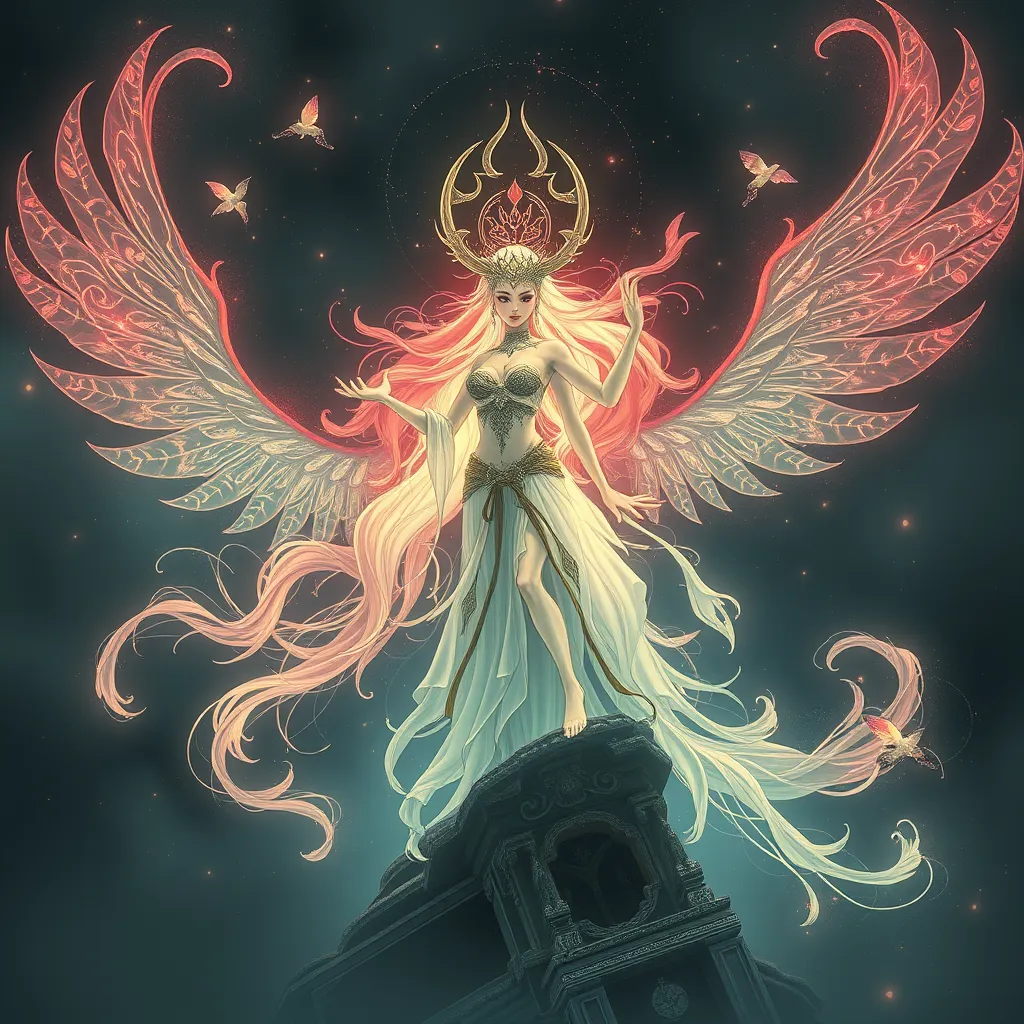Tales of the Jinniya: Feminine Spirits and their Enchanting Lore
I. Introduction to Jinniya: The Feminine Spirits
The Jinniya are fascinating feminine spirits rooted in Middle Eastern folklore, often characterized by their enchanting beauty and mystical powers. These spirits, often considered the female counterparts to male jinn, possess a rich history and a myriad of interpretations across different cultures.
The term “Jinniya” is derived from the Arabic word “jinn,” which refers to supernatural beings that exist in a realm parallel to humanity. In various mythologies, Jinniya hold significant cultural weight, symbolizing both benevolent and malevolent forces. This article will delve into the captivating lore surrounding Jinniya, exploring their historical context, characteristics, notable tales, and their representation in modern popular culture.
II. The Historical Context of Jinniya
The roots of Jinniya can be traced back to ancient Middle Eastern folklore, where they were often depicted in tales that highlighted their supernatural qualities and complex personalities. These spirits were believed to inhabit specific places, such as deserts, rivers, and forests, often influencing the lives of those who encountered them.
Islamic tradition has further shaped the narratives surrounding Jinniya, incorporating them into religious texts and folklore. Unlike their male counterparts, who are often portrayed as powerful and uncontrollable, Jinniya are frequently depicted with nuanced characteristics, embodying both nurturing and vengeful traits.
- Male Jinn: Typically depicted as more aggressive and powerful.
- Jinniya: Portrayed with emotional depth and complexities.
III. Characteristics and Attributes of Jinniya
Jinniya are often characterized by their ethereal beauty and magical abilities. While their physical appearance may vary across different cultures, they are commonly described with long flowing hair, luminous skin, and alluring features. Their magical traits include:
- Shape-shifting abilities
- Control over natural elements, such as water and fire
- Healing powers and the ability to grant wishes
Common symbols associated with Jinniya include:
- Water: Often linked to their nurturing and life-giving qualities.
- Moon: Symbolizing femininity and intuition.
- Flowers: Representing beauty and the transient nature of life.
Across cultures, the appearance and personality of Jinniya can differ significantly, reflecting local beliefs and values. For instance, in some South Asian tales, Jinniya are portrayed as seductive and mischievous, while in Middle Eastern folklore, they may be seen as protectors of the land.
IV. Famous Jinniya Tales and Legends
Numerous captivating stories feature Jinniya, each revealing unique insights into the human condition and cultural values. Notable tales include:
- The Tale of the Fisherman and the Jinni: A classic story from “One Thousand and One Nights,” where a fisherman encounters a Jinniya who offers him wealth but also tests his morality.
- The Legend of Layla and Majnun: A poignant love story where a Jinniya aids the star-crossed lovers, blending themes of love, destiny, and sacrifice.
These tales often explore profound themes such as love, revenge, and transformation, impacting cultural narratives and shaping societal norms. They serve as moral lessons, illustrating the consequences of human actions and the complexities of desire.
V. Jinniya in Modern Popular Culture
In contemporary literature, film, and art, Jinniya have experienced a resurgence, capturing the imagination of audiences worldwide. They are often depicted as complex characters who challenge traditional gender roles and explore themes of empowerment and autonomy.
Popular representations include:
- Film adaptations of classic tales, such as “Aladdin,” where the character of the Jinniya is reimagined as a powerful female figure.
- Literature that reinterprets Jinniya stories, emphasizing their strength and resilience.
- Art that portrays Jinniya as symbols of feminine power and mystique.
The renewed interest in feminine spirits has led to comparisons with other supernatural female figures, such as fairies and mermaids, highlighting a universal fascination with the mystical and the unknown.
VI. The Role of Jinniya in Feminine Empowerment
Jinniya embody a duality of being both protectors and nurturers, symbolizing feminine strength and resilience. In many tales, they are depicted as guardians of the vulnerable, showcasing their protective nature.
Feminist interpretations of Jinniya tales have emerged, exploring their roles as agents of change and empowerment. These stories often challenge patriarchal norms and highlight the importance of female agency, encouraging contemporary discussions about gender equality.
- Jinniya as protectors of women’s rights.
- The influence of Jinniya stories in feminist literature and discourse.
VII. Regional Variations and Interpretations of Jinniya
Jinniya folklore varies significantly across cultures, with each region contributing unique tales and interpretations. In Arab culture, they are often seen as benevolent spirits, while in Persian lore, they may exhibit more mischievous traits. South Asian interpretations frequently blend local beliefs with traditional narratives.
Unique local tales often carry significant meanings, reflecting the values and issues faced by the local communities. Cross-cultural exchanges have enriched Jinniya lore, leading to a tapestry of stories that continue to evolve over time.
VIII. Conclusion: The Enduring Legacy of the Jinniya
The Jinniya remain a timeless symbol of feminine mystique and strength, resonating with contemporary audiences as they navigate discussions around gender and empowerment. Their stories continue to evolve, reflecting societal changes and cultural dynamics.
As we explore the enchanting lore of Jinniya, we invite readers to share their own encounters and interpretations, enriching the collective understanding of these captivating feminine spirits. The legacy of the Jinniya is far from over; it is a living tapestry that continues to inspire and intrigue generations.




